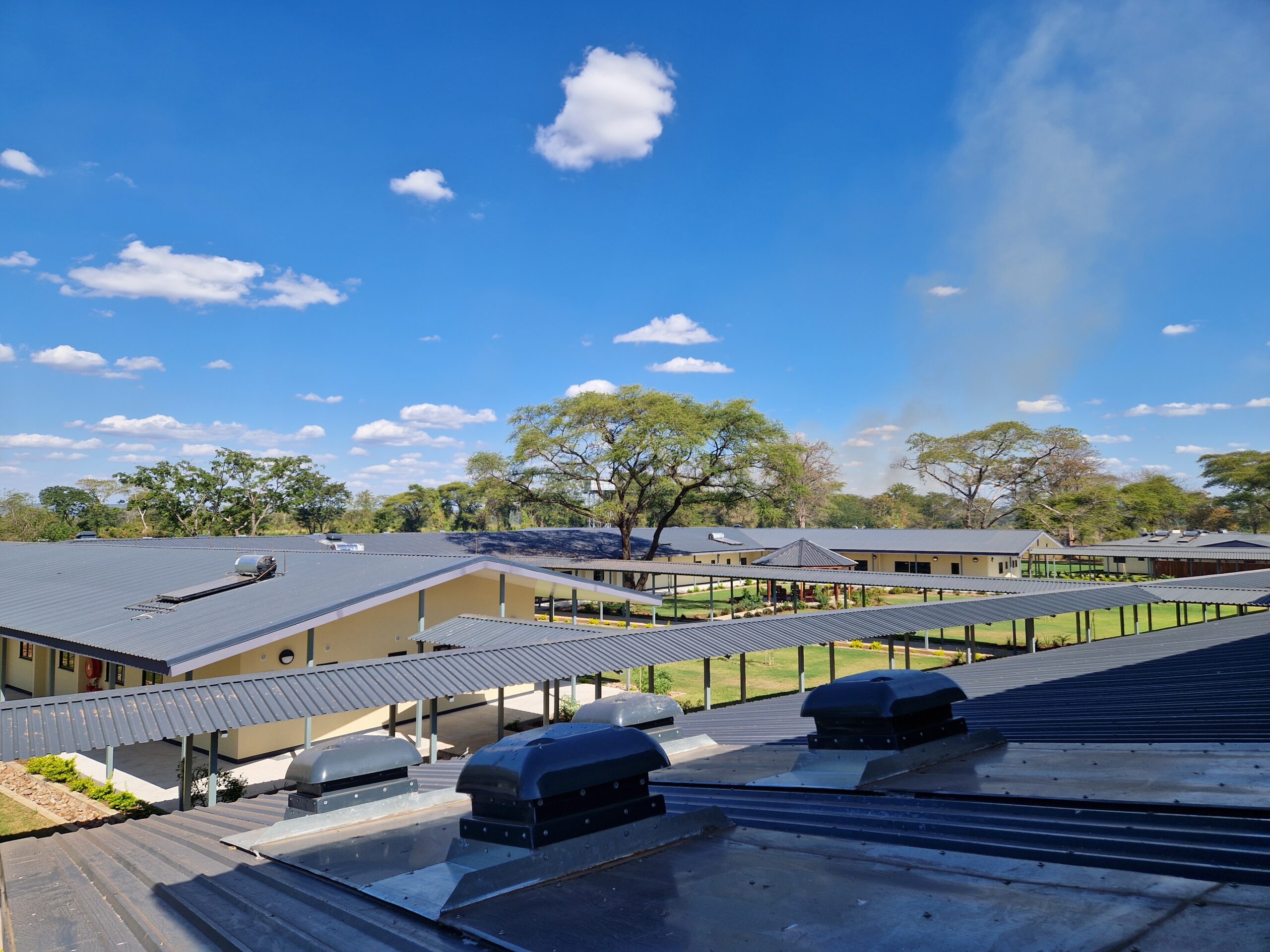SDG 9 aims to “build resilient infrastructure, promote inclusive and sustainable industrialisation, and foster innovation”. The resilience of Zambia’s national infrastructure to climate change is crucial because, although Zambia has contributed little to global greenhouse gas emissions, it is expected to face significant effects because of anthropogenic climate change, including an increase in temperatures and increasingly intermittent and declining overall levels of rainfall. Rural areas in Zambia with weak health infrastructure are particularly vulnerable to the health impacts, such as heat stress, malnutrition, vector-borne, and water-borne diseases that are increased risks as a result of the predicted changes in climate.
The Zambia Health Facilities Programme improves the geographical reach and quality of Zambia’s healthcare infrastructure, contributing to Target 9.1 to “develop quality, reliable, sustainable, and resilient infrastructure […] to support economic development and human well-being”. Reliability and resilience are enhanced through specific design aspects, including:
- Implementing surface water drainage systems that closely mimic natural processes, improving attenuation, infiltration, and local aquifer recharge.
- Building naturally ventilated buildings with a highly insulated walling system to better resist thermal transfer.
- Incorporating water and electricity storage and backup systems for use during the dry season and incidences of adverse weather.
- Minimising site vegetation and topsoil stripping to prevent desertification, retain groundwater, and reduce local ambient temperatures.
Innovative construction technologies and techniques have also made significant contributions to Target 9.4, which seeks to “upgrade infrastructure and retrofit industries to make them sustainable, with increased resourceuse efficiency and greater adoption of clean and
environmentally sound technologies and industrial processes”. For example, the engineered steel frame system helps reduce the embodied carbon of the facilities by decreasing the superstructure’s weight without compromising its strength, resulting in reduced concrete usage for the substructure. Concrete production is responsible for up to 8% of the world’s CO2 emissions.
To enhance resource-use efficiency during operation, the facilities incorporate renewable energy sources, such as solar water, and solar PV electrical power – nearly half of the facilities operate off-grid without connection to mains electricity.
Taken together, the programme supports human well-being by improving existing infrastructure and enhancing the reliability, resilience, and sustainability of Zambia’s healthcare system

